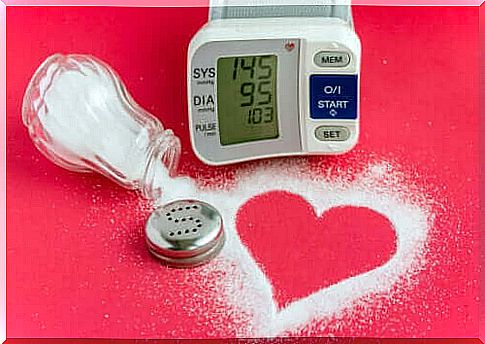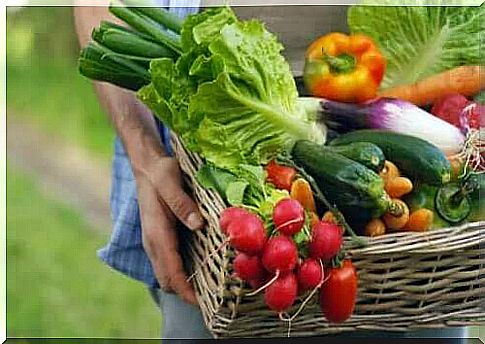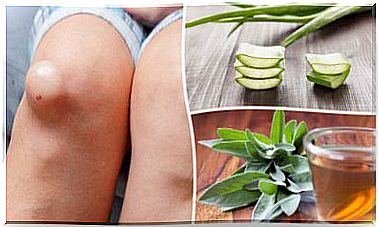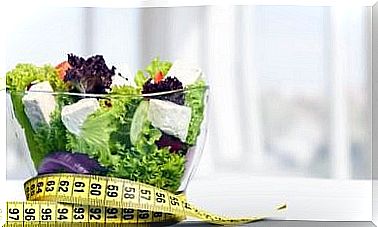Low Sodium Food: Support Your Heart Health!
Every day is a good day to change your lifestyle and eat better – for example with low-sodium foods. Read on to learn about the many different options!

Cardiovascular diseases are the deadliest diseases in the world and treatment often requires low-sodium foods in the diet. This is because high salt intake is directly related to conditions such as high blood pressure. Hence, switching to healthier foods is a priority.
The world population eats twice as much salt as recommended by the World Health Organization (WHO). Accordingly, people should only consume 5 grams of salt or 2 grams of sodium per day to reduce blood pressure and cardiovascular risk.
Mattes and other researchers point out that 77% of sodium comes from processed foods and only 12% from natural foods. Therefore, you should try to avoid consuming salt from overly processed foods. Consequently, the safest way to keep your diet low in sodium is to include natural foods in your diet.
Low sodium foods
According to the US UNC Health Care , a diet is low in sodium when it is limited to an amount of one teaspoon of table salt per day. The limit of 2300 milligrams of sodium per day should therefore not be exceeded. Such a diet can help lower your risk of high blood pressure and thus promote heart health.
The Spanish Heart Foundation recommends a slightly stricter diet for the control of high blood pressure, namely a sodium intake of 1,353 milligrams per day. That’s the equivalent of a little more than half a teaspoon of salt.
Here are six types of natural, low-sodium foods.
1. Vegetables
Fresh vegetables such as leafy greens, roots, flowers and stems are low in sodium. For example, the sodium content of leafy vegetables can range from 70 milligrams to 150 milligrams per 100 grams.
Corn, broccoli, pumpkin, eggplant, sweet potatoes and carrots contain between 15 and 30 milligrams of sodium. According to the INCAP food table, cauliflower, onions, tomatoes and cucumbers contain less than 10 milligrams.
Studies have shown that people should eat four to five servings of raw vegetables a day. This recommendation corresponds to the nutritional approach developed in the USA to control arterial high blood pressure, the DASH diet (dietary approach to stop hypertension).

2. Low-sodium foods: fruits
In general, fruits are fairly low in sodium – usually less than 10 milligrams. They also provide pigments that give them a wide variety of colors and at the same time have an antioxidant effect.
They also contain large amounts of potassium, magnesium and fiber. The DASH diet recommends four to five servings a day. That means one medium-sized fruit or half a cup of crushed fruit per serving.
The Spanish Heart Foundation recommends around three servings of fruit a day. This should include a piece of apple, two lemons, a slice of watermelon, four oranges in the juice and a plum.
In the second week, a pomegranate, five grams of raisins and 75 grams of avocado can be added.
3. Potatoes
The potato is one of the low sodium tubers. However, attention must be paid to the preparation!
The sodium content of an unpeeled, boiled or baked potato without added salt is 10 to 14 milligrams per 100 grams, whereas a peeled, boiled potato has a content of just five milligrams. Mashed potatoes with milk and butter, on the other hand, can be over 300 milligrams per 100 grams.
Studies show that it can be good to cook potatoes in omelets and add shredded chicken if necessary. And it’s recommended to eat around 907 grams of potatoes a week.
4. Whole grains and whole grains
Some health organizations classify brown rice, oatmeal, and quinoa as foods that provide less than 5% of the recommended daily sodium intake. Furthermore, pulses such as beans, peas and lentils are low in sodium.
Almeida pointed out that soluble fiber can reduce the bad cholesterol, or LDL, that clogs your arteries. They contain oats, quinoa, barley and corn. In this regard, Pereira points out that increasing fiber consumption to 10 grams per day can reduce the risk of heart disease.
5. Nuts
Walnuts, hazelnuts, almonds, pecans, macadamias and other types of nuts contain less than 10 milligrams of sodium per 100 grams.
Nuts are also excellent sources of omega-3 fatty acids, and these are good for the heart, according to the Spanish Heart Foundation.
The DASH diet recommends four to five servings of nuts per week (one serving is a third of a cup) and two tablespoons of oilseeds such as flax seeds or sesame seeds.
6. Low Sodium Foods: Lean Proteins
Low-fat proteins are the best choice for meat or vegetable protein. Beef provides over 50 milligrams of sodium and fresh fish, including blue fish, contains between 40 and 60 milligrams. Two servings of 85 grams each per day ensure a sufficient supply of protein.
Oily fish like fresh tuna, salmon, and mackerel are good for heart health. In addition to their low sodium content, these varieties also score with their polyunsaturated fatty acids of the omega-3 group.
Another source of protein is milk. However, all dairy products should be unsalted. Two to three servings a day are recommended.
How much sodium do certain amounts of salt contain?
Table salt consists of a mixture of 40% sodium and 60% chloride. An overview lists the corresponding sodium content that different amounts of salt have.
This is how the calculations become easier:
- 1/4 teaspoon salt contains 500 milligrams of sodium
- 1/2 teaspoon of salt contains 900 milligrams
- 3/4 teaspoon of salt contains 1500
- 1 teaspoon of salt contains 2000

Foods to avoid for the lowest possible sodium intake
There are many types of foods that you should avoid if you want to reduce your daily sodium intake. Then you can find the ones that contain the most of them:
- Commercially available canned fruit and vegetables, canned food, the freezer or with creamy sauces.
- Over-processed cereal products. That means white bread, muffins, donuts, cookies, buttered popcorn, cakes and generally products made from refined white flour.
- Protein foods with high sodium content. So sausage and cold cuts, fatty meat or dairy products.
- Oily products. That means margarine, creams, hydrogenated fats or thick sauces.
- The “Miscellaneous” category also includes canned and dry soups, monosodium glutamate, mayonnaise, soy sauce, dressings and generally canned foods
Include low-sodium foods in your diet for good heart health
Reducing your salt intake should be the first step in controlling your high blood pressure. But how much salt should you consume every day? It’s best to ask your doctor or nutritionist.
However, you already know that eating a balanced diet high in fresh fruits and vegetables, whole grains, nuts, potatoes, and lean meats can improve your heart health.
Always pay attention to the labels on the food you buy in the supermarket.









